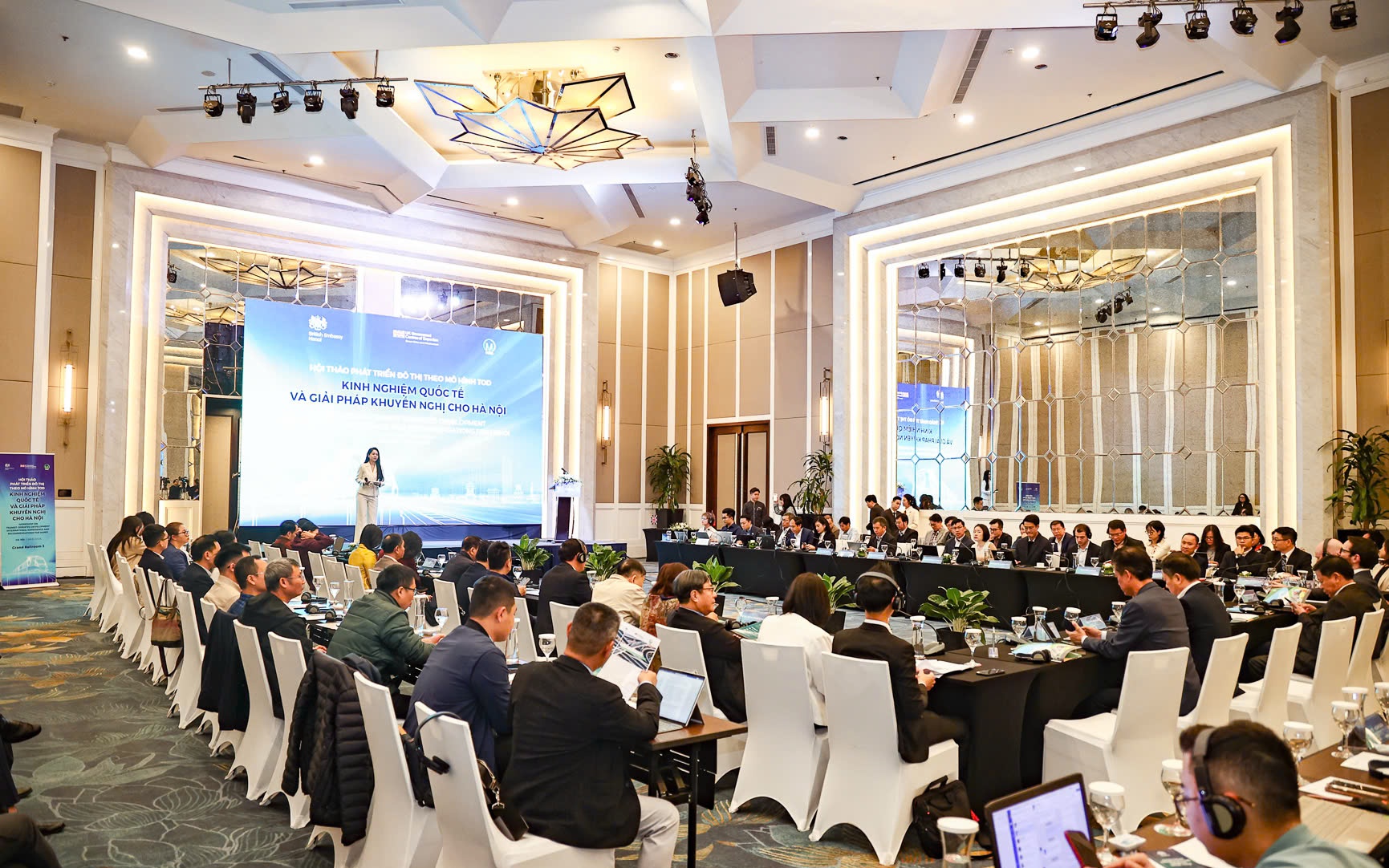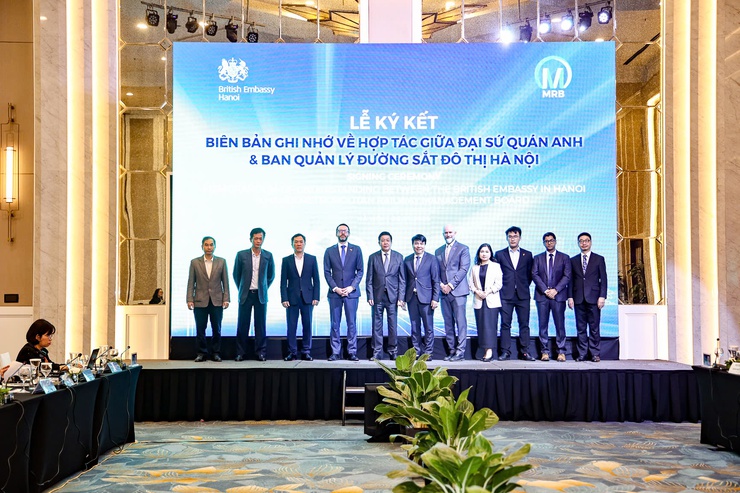In his opening speech, Nguyen Cao Minh, Head of the Hanoi Metropolitan Railway Management Board (MRB), said that the Politburo had issued Resolution No. 15-NQ/TW on May 5, 2022, and Conclusion No. 49-KL/TW on February 28, 2023, on the direction and tasks for the development of Hanoi until 2030, with a vision to 2045. Hanoi has also developed an overall plan for investing in the city's metro system to realize these goals.

Overview of the event.
According to Minh, the workshop, jointly organized by the MRB and the British Embassy to Vietnam, aims to discuss solutions for implementing the city's directives on managing, operating, and utilizing the metro system.
Minh said that this workshop is a crucial step in strengthening the link between transportation planning and urban development. It aims to support the implementation of the Capital Law, build modern infrastructure, and foster economic and social growth, ultimately improving residents' quality of life and ensuring sustainable development for Hanoi.
The development of urban areas according to the Transit-Oriented Development (TOD) model combines urban development with public transportation (PT), encouraging high-density urban development by using land around transportation hubs to promote PT, reduce dependence on private vehicles, and support sustainable urban growth.
For Hanoi, TOD is a crucial strategy to manage rapid urbanization, reduce traffic congestion, improve air quality, optimize land use, generate revenue for PT, enhance access to PT, promote economic growth, and improve urban living standards.

Delegates at the meeting.
However, the implementation of TOD in Hanoi faces many challenges due to fragmented planning, lack of coordination between agencies, financial constraints, and difficulties in land reclamation. Social and economic inclusion, as well as ensuring fairness, also pose significant barriers to TOD implementation.
Through the Green City Infrastructure Program (GCIP) of the UK's Foreign, Commonwealth & Development Office (FCDO), MRB has worked with experts to apply TOD principles in Hanoi's urban planning to strengthen coordination between stakeholders, develop financial mechanisms through land value capture (LVC), and propose solutions to realize TOD within Hanoi's context.
Speaking at the workshop, Iain Frew, the British Ambassador to Vietnam, stated that the UK has long been a leader in pioneering urban development solutions, including TOD, which helps cities optimize PT networks and reduce congestion. "The UK is pleased to support the development and implementation of TOD, which plays a key role in enhancing Hanoi's public transportation infrastructure and reducing the city's carbon footprint. The cooperation between Hanoi and MRB demonstrates the shared vision of our two countries for sustainable development," Mr. Iain Frew said.
At the workshop, a Memorandum of Understanding (MOU) was signed between MRB and the British Embassy & Northern Ireland in Vietnam, witnessed by Dương Đức Tuấn, Vice Chairman of the Hanoi People's Committee, and other relevant parties.
This marks a significant milestone in enhancing international cooperation in the development of public transportation systems in Hanoi. In addition to affirming the commitment of both parties to developing Hanoi's metro system according to the TOD model, the MOU also incorporates Building Information Modeling (BIM) requirements into metro projects. This strategic approach aims to optimize design, construction, operation, and management of metro projects. The cooperation draws on the advanced experience of the UK, a country with notable achievements in public transportation and sustainable urban development.
The application of BIM standards will significantly improve Hanoi's planning, project monitoring, and management capabilities, reduce risks, save costs, and enhance project quality. At the same time, the TOD model will be developed in a more systematic manner, ensuring connectivity between PT and urban areas to meet the needs of residents effectively.